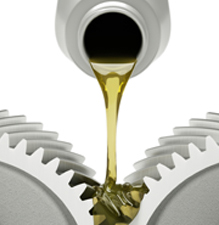It’s more than common to deal with lubricated machines and most of us love to take good care of them. Just like we love to maintain our health and fitness by taking healthy food and nutrition, the same goes for your machines as well. All lubricated machines are required to provide the best hydraulic oil so that they will work smoothly and remains with you in a longer run. Since there are a number of options available when buying a hydraulic fluid, it can make you unsure about which one you should choose as each one of them claims to be the best.
Well, it would be great if all lubricated machine oils are OK to be used, but sadly that’s not the reality. Each hydraulic fluid contains some certain specifications which do not work best for every machine. In fact, the selection of a low hydraulic fluid that does not fulfill your machine requirement can contribute to shortening the average life of your machine.
The hydraulic fluid contains two primary considerations that you may pay attention to.
- The Viscosity Level
- Hydraulic Oil Type (AW or R&O)
The above two specifications are normally defined by the variety of hydraulic pumps used in the system such as operating pressure and temperature. If you wish to select the best possible product for your machine, you need to get and employ all available information.
Contents of Hydraulic Oil
Hydraulic oil is obtained by a variety of different ingredients. These ingredients then mixed depending on the type of oil your machines required. Hydraulic fluid is commonly manufactured from:
- Mineral oil
- Esters
- Glycol
- Silicone
- Ethers and more.
To get the diverse applications of hydraulic fluid, manufacturers combine it with various additives to provide it different characteristics.
Hydraulic Fluid
The final form of Hydraulic oil used in desired roles such as smoothing the operation of lubricated machines. The roles also range from:
- Warmth transfer medium
- Energy transfer medium
- Lubrication medium
The chemical formation of hydraulic fluid can take many forms when selecting it for specific machines which range from full synthetic to water-based fluids.
Synthetic Fluid
The synthetic fluid is made by expert humans by using a chain of molecules that are accurately arranged to provide superior fluid stability, lubricity, and other essential efficiency raising characteristics.
The synthetic fluid is best to use where both extreme and low temperatures are present. They are also ideal where high pressures are required. The fluid is incompatible with mineral oils, seals, paints, and varnishes. They normally have a higher cost and include toxicity.
Petroleum Fluid
It’s a common oil that is made from refining crude to the desired level to obtain more reliable lubricant performance.
With the inclusion of ingredients that vary from anti-wear (AW), corrosion, oxidation preventions (RO) and thickness index (VI) improvers, these fluids offer a lower-cost option to synthetics as well as can be really similar in efficiency when certain additive bundles are included.
Water-Based Fluids
Water-Based Fluids are usually required where there is a high possibility of fire. They are costly than petroleum fluid and cheaper than synthetic fluid. While they use good defense for fire, they do lack wear defense capabilities.
| Pump Type | Temperature °F MAX | Pressure PSI | Viscocity ISO VG |
| Gear | 158 | 500 | 32-68 |
| Gear | 140 | 500 | 15-32 |
| Vane | 158 | 500 | 15-22 |
| Vane | 158 | 1000 | 22-46 |
| Vane | 140 | 1000 | 15-32 |
| Vane | 104 | 1000 | 10-15 |
| Piston | 158 | 500 | 15-22 |
| Piston | 158 | 2500 | 22-46 |
| Piston | 140 | 2500 | 32-46 |
| Piston | 104 | 2500 | 15-22 |
| Piston | 158 | 4250 | 46-68 |
| Piston | 140 | 4250 | 22-46 |
| Piston | 104 | 4250 | 15-22 |
Pumps and Viscosity Requirements
There are three primary design varieties of pumps used in hydraulic machines that are:
- Vane
- Piston
- Gear
Every pump design is used for certain performance responsibilities and processes. Each pump model must be handled on a case-by-case basis for oil pick.
Vane
Inside a vane pump, there are rotors with slots placed to a shaft that is rotating eccentrically to a cam ring. When the rotors and vanes spin within the ring, the vanes become worn because of the contact between two contacting surfaces internally. Vane pumps are commonly more expensive to maintain, but they are ideal to maintain a regular flow of machines. They require a viscosity range of 14 to 160 centistokes (CST) at working temperatures.
Piston
These pumps are generally middle-of-the-road hydraulic pump and are more long-lasting as compared to vane pump. They have the ability to produce higher operating pressures that are up to 6,000 psi. Piston pumps have a viscosity range of 15 to 160 CST at operating temperatures.
Gear
They are treated to be the most unproductive of the three pump standards but are more friendly with greater contamination. They are managed by compressing the fluid between the trapped air volume of the meshing teeth present in a gear set. After then the inside wall available in the gear housing expells that fluid.
Types of Gear Pumps
1: Internal Gear
Internal gear pumps contain an extended range of viscosity choices with the highest up to 2,200 CST. It offers good efficiency and noiseless operation with pressures from 3,000 to 3,500 psi.
2: External Gear
They are less efficient than there counterparts but offer few advantages such as:
- Ease of Maintenance
- Regular Flow
- Less Expensive to Purchase and Renovate
External Gear can produce pressures ranging from 3,000 to 3,500 psi, with the viscosity range restricted to 300 CST.


